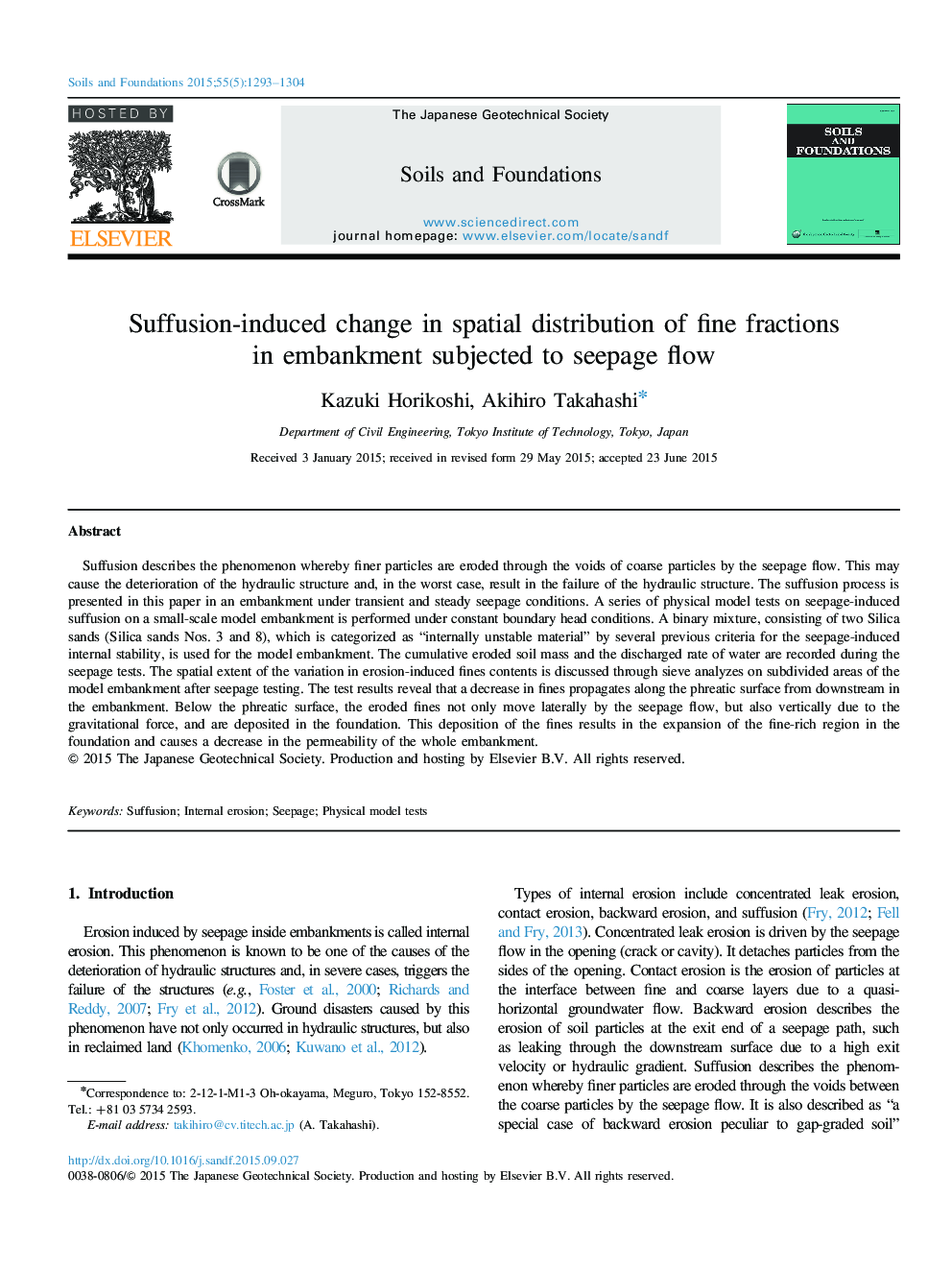| Article ID | Journal | Published Year | Pages | File Type |
|---|---|---|---|---|
| 307107 | Soils and Foundations | 2015 | 12 Pages |
Abstract
Suffusion describes the phenomenon whereby finer particles are eroded through the voids of coarse particles by the seepage flow. This may cause the deterioration of the hydraulic structure and, in the worst case, result in the failure of the hydraulic structure. The suffusion process is presented in this paper in an embankment under transient and steady seepage conditions. A series of physical model tests on seepage-induced suffusion on a small-scale model embankment is performed under constant boundary head conditions. A binary mixture, consisting of two Silica sands (Silica sands Nos. 3 and 8), which is categorized as “internally unstable material” by several previous criteria for the seepage-induced internal stability, is used for the model embankment. The cumulative eroded soil mass and the discharged rate of water are recorded during the seepage tests. The spatial extent of the variation in erosion-induced fines contents is discussed through sieve analyzes on subdivided areas of the model embankment after seepage testing. The test results reveal that a decrease in fines propagates along the phreatic surface from downstream in the embankment. Below the phreatic surface, the eroded fines not only move laterally by the seepage flow, but also vertically due to the gravitational force, and are deposited in the foundation. This deposition of the fines results in the expansion of the fine-rich region in the foundation and causes a decrease in the permeability of the whole embankment.
Related Topics
Physical Sciences and Engineering
Earth and Planetary Sciences
Geotechnical Engineering and Engineering Geology
Authors
Kazuki Horikoshi, Akihiro Takahashi,
